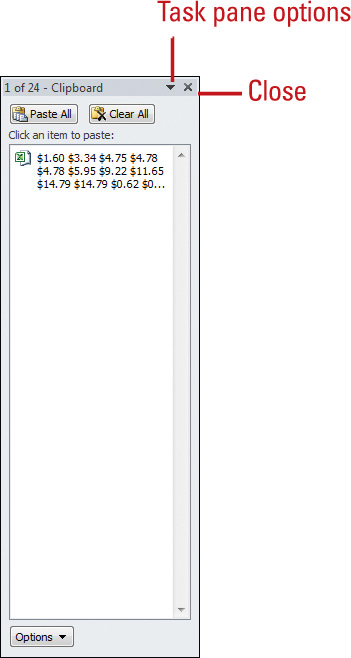Converting an Existing Workbook
When
you open a workbook from 97-2003, Excel 2010 goes into compatibility
mode—indicated on the title bar—where it disables new features that
cannot be displayed or converted well by previous versions. When you
save a workbook, Excel 2010 saves Excel 97-2003 files in their older
format using compatibility mode. The workbook stays in compatibility
mode until you convert it to the Excel 2007-2010 file format. Excel 2007
and Excel 2010 use the same file format, so you don’t need to convert
files between them.
Convert an Excel 97-2003 to Excel 2010
 Open the Excel 97-2003 workbook you want to convert to the Excel 2007-2010 file format.
Open the Excel 97-2003 workbook you want to convert to the Excel 2007-2010 file format.
The Excel 97-2003 workbook opens in compatibility mode.
 Click the File tab, and then click Info.
Click the File tab, and then click Info.
 Click Convert.
Click Convert.

 Click OK to convert the file to the Excel 2007-2010 format.
Click OK to convert the file to the Excel 2007-2010 format.
Excel exits compatibility mode, which is only turned on when a previous version is in use.
Did You Know?
You can display extensions in the Save and Open dialog boxes and Recent Documents list.
Changing the Windows option also changes Excel. In the Folder Options
dialog box on the View tab, clear the Hide Extensions For Known File
Types check box.
Using Task and Window Panes
Task panes
are separate windows that appear when you need them, such as
Signatures, or when you click a Dialog Box Launcher icon, such as Office
Clipboard and Clip Art. A task pane displays various options that
relate to the current task. Window panes
are sections of a window, such as a split window. If you need a larger
work area, you can use the Close button in the upper-right corner of the
pane to close a task or window pane, or move a border edge (for task
panes) or splitter (for window panes) to resize it.
Work with Task and Window Panes
- Open a Task Pane. It appears when you need it or when you click a Dialog Box Launcher icon.
- Close a Task or Window Pane. Click the Close button in upper-right corner of the pane.
- Resize a Task Pane. Point to the Task Pane border edge until the pointer changes to double arrows, then drag the edge to resize it.
- Resize a Window Pane. Point to the window pane border bar until the pointer changes to a double bar with arrows, then drag the edge to resize it.


Did You Know?
You can insert window panes. Click the View tab, click the Split button in the Window group.